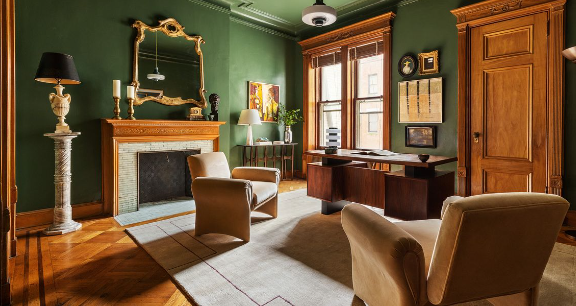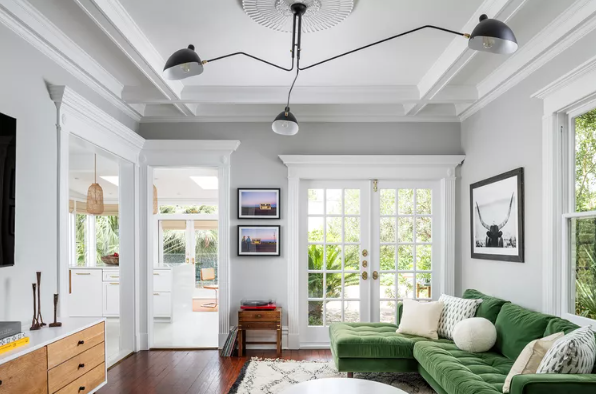Guidelines To Pick A Perfect Paint Color For Your Home
Now that all the structural issues have been resolved, you can finally finish customizing your new house to fit your needs. It’s time to start working on the last, and maybe most difficult, task of renovating your new house: choosing the color scheme for the interior areas.
Choosing a paint color for your interior walls can be a very difficult task, particularly if you have no experience choosing colors or tones.
Selecting the ideal paint color for your house is an important choice that will have a big impact on how your living area looks and feels overall. The procedure can seem overwhelming because there are so many alternatives, but if you follow these pointers, you’ll be able to make decisions with confidence and ease.
How can you determine one color complements another? How even do you start?
Fear not—here are some recommendations for selecting the ideal paint color that can assist you steer clear of numerous color blunders.
- Look for inspiration for paint colors
There are lots of free ideas available on the Internet if you don’t know how to handle the color shades. For example, Pinterest is a fantastic resource. You might begin by pinning visually appealing home design concepts. You will be able to determine what color and style appeals to you after you have a few. It can assist you in creating the preliminary color scheme for your interior areas.
- Adopt a scientific mindset
Do not have a color scheme that you must utilize in any area of your new house? Then, think about making a scientific decision about it. For instance, blue is a soothing color that can help you feel at ease and content, so it might be the ideal option for your bedroom. Green, on the other hand, is among the colors that soothes your eyes the most and lessens worry. This color is fantastic for your study or home office.
- Decorative and home furnishings come first
The tone of the room should be determined by the decorative or existing furniture. If your grandparents gave you an old wooden cabinet that serves as the centerpiece of your dining area, paint the background a neutral color like white or cream to draw attention to the cabinet and the things that are on exhibit inside.
Similarly, you could want to add some color and joy to the wall to liven up your living room if your sofa is a plain white one.
- Be aware of your desires
Selecting the color scheme for your interior areas can be made much easier by deciding on your home’s design concept and style. In order to create an eye-catching visual effect that complements the overall interior design theme, you can rule out funky paint color schemes like violet, rose red, and bright yellow and instead concentrate on natural color schemes like light brown, cream, and white if you prefer a Japanese Muji style.
- Recognize your areas
Warm colors like light yellow provide a friendly environment in a larger area, whereas light colors like white and pale peach tend to make a tiny space look bigger. In general, a larger space can accommodate a greater variety of colors and deeper color tones than a smaller one. So, one of the most important things to do to prevent picking a wall color you’ll regret is to have a thorough grasp of your space.
READ ALSO: Is Ireland a Good Place to Travel to?
- Allow the hues to flow
While each room has a specific purpose for which color can help to distinguish it from the others, continuity is also crucial, particularly in open-plan layouts.
To emphasize how all of the areas are connected to one another, you might want to keep the connecting spaces, such the hallway, stairwell, or corridor, neutral and cohesive by using colors like white, beige, or greige.
- Adhere to the color wheel
When you want more than one color or two in the same location, get yourself a color wheel. The color wheel can help you determine which colors work well together and which ones will make your eyes water. For instance, red and green look best together.
- Uncertain? Begin little at start.
Try tiny rooms like the garden, store room, or bathroom first if you don’t have the money or time to “just try” and repaint a room later.
Alternatively, before painting the color on the wall, paint it on a chipboard or poster board and hold it up to your furniture or other decorative pieces that will be in the space to see whether it meets your expectations.
- Remember to use natural lighting
Everyone is aware that lightings affects the color of the walls, thus it is imperative to take this into account when selecting a color for a space. On the other hand, natural illumination is equally crucial—something that many homeowners frequently forget. Bright red walls will be too distracting to sleep comfortably, so steer clear of applying bright red paint in a bedroom that faces west, which gets more natural light.
CONCLUSION
Choosing the perfect paint color for your home can greatly enhance its ambiance and appeal. By following these guidelines, you can navigate through the myriad of options with confidence, ensuring that the colors you select reflect your style, personality, and the desired atmosphere of each room.
Whether you opt for soothing neutrals, bold accents, or timeless classics, the right paint color can transform your living space into a place of beauty and comfort, reflecting your unique taste and creating a home that truly feels like your own.




